#polygalaceae
Text




P – Polygala L. (Polygalaceae)
1. Polygala nicaeensis Risso ex W.D.J.Koch – Poligala di Nizza
2. Polygala major Jacq. – Poligala maggiore
3-4. Polygala vulgaris L. – Poligala comune
18 notes
·
View notes
Text

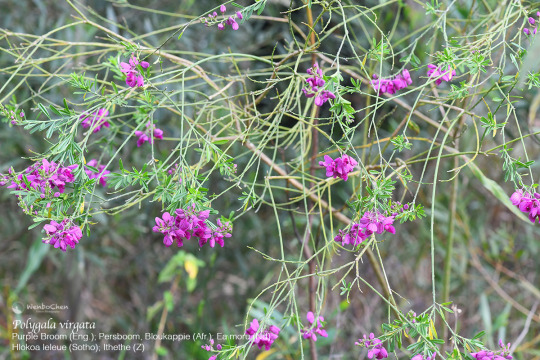



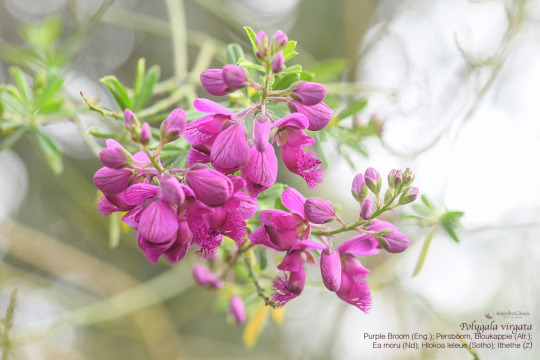
Purple Broom (Polygala virgata), originally from southern Africa. It was introduced to Australia as a garden plant, but it managed to escape the gardens and naturalised itself in SE and SW Australia. This was photographed in Brisbane Water NP of Sydney.
#floraofsouthafrica#floraofaustralia#sydneywildflower#polygalaceae#polygalavirgata#environmentalweed#远志科#澳洲植物#南非植物
20 notes
·
View notes
Text
The Enchanting Pink Bubbles Plant: A Burst of Color for Your Garden
If you're looking to add a splash of whimsical charm and vibrant color to your garden, look no further than the captivating Pink Bubbles plant. This unique and eye-catching plant is perfect for garden enthusiasts who appreciate the beauty of nature's more unusual offerings. In this blog, we'll explore everything you need to know about growing and caring for the Pink Bubbles plant, as well as some fascinating facts that make it a must-have for your green space.
What is the Pink Bubbles Plant?
The Pink Bubbles plant, scientifically known as Polygala myrtifolia, is a perennial shrub that belongs to the Polygalaceae family. It's native to South Africa and is celebrated for its stunning clusters of bright pink, bubble-like flowers that bloom throughout the year. The plant's evergreen foliage is equally attractive, providing a lush green backdrop that highlights the vibrant blooms.
Why Choose the Pink Bubbles Plant?
Aesthetic Appeal: The Pink Bubbles plant is a showstopper in any garden. Its vivid pink flowers are not only beautiful but also attract butterflies and hummingbirds, adding life and movement to your garden.
Low Maintenance: This plant is relatively easy to care for, making it an excellent choice for both novice and experienced gardeners. It thrives in a variety of soil types and requires minimal watering once established.
Versatility: Whether you're looking to create a striking focal point in your garden, add color to a mixed border, or even grow it in a container on your patio, the Pink Bubbles plant is versatile enough to meet your needs.
Growing Conditions
To ensure your Pink Bubbles plant thrives, consider the following growing conditions:
Sunlight: The plant prefers full sun to partial shade. Ensure it receives at least six hours of direct sunlight daily for optimal blooming.
Soil: Well-drained soil is essential. While the plant is tolerant of various soil types, sandy or loamy soils with good drainage are ideal.
Watering: After planting, water the Pink Bubbles plant regularly until it is well-established. Once mature, it is drought-tolerant and only needs occasional watering.
Temperature: This plant enjoys warm climates and is hardy in USDA zones 9-11. If you live in a cooler region, consider growing it in a pot that can be moved indoors during winter.
Planting and Care Tips
Planting: Dig a hole twice the width of the root ball and as deep. Place the plant in the hole, backfill with soil, and water thoroughly.
Pruning: To maintain a compact shape and encourage more blooms, prune the Pink Bubbles plant after flowering. Remove any dead or damaged branches to promote healthy growth.
Fertilizing: Apply a balanced, slow-release fertilizer in the spring to support vigorous growth and prolific flowering.
0 notes
Text
Arbusto-borboleta – Polygala myrtifolia

Nome Científico: Polygala myrtifolia
Nomes Populares: Arbusto-borboleta, Polígala
Família: Polygalaceae
Categoria: Arbustos, Cercas Vivas, Flores, Flores Perenes
Clima: Mediterrâneo, Oceânico, Subtropical, Tropical
Origem: África, África do Sul
Altura: 0.6 a 1.8 metros
Luminosidade: Meia Sombra, Sol Pleno
Ciclo de Vida: Perene
Sobre o Arbusto-borboleta ou Polígala
O arbusto-borboleta é uma planta florífera e ornamental, de textura lenhosa, nativa do Cabo Oriental, na África do Sul.
A sua ramagem é ereta e ramificada, e ela atinge até 1,8 metros de altura se deixada crescer livremente.
Apresenta aspeto arredondado, com ramos enfolhados desde à base da planta.
As folhas são alternas, coriáceas, de cor verde clara, verde escura ou cinza-azulada, lembrando as folhas da murta.
Em clima subtropical a temperado inicia a floração na primavera, repetindo-se no outono.
Já em clima quente, a floração pode perdurar durante o ano todo.
https://youtu.be/p-wPVJ5hk_w
Como cultivar o Arbusto-borboleta
Deve ser cultivada sob sol pleno ou meia sombra, em solo fértil, bem drenável, enriquecido com matéria orgânica e irrigado nos primeiros meses de implantação.
É uma planta muito rústica e de baixos requerimentos, tolerando estiagens pouco prolongadas e o frio subtropical, sujeito à geadas leves.
É própria também para regiões litorâneas pois se adapta bem à maresia e salinidade no solo.
Apesar de vegetar sob meia sombra, a espécie fica mais densa, enfolhada e florífera sob sol pleno. Evitar locais sujeitos a alagamentos, que podem provocar o apodrecimento do arbusto-borboleta.
Aceita podas leves, que devem ser realizadas após a floração e visam manter o formato e favorecer a iluminação no centro da planta.
Multiplica-se facilmente por sementes e estacas de ponteiro, postas a enraizar no Outono (em estufas), ou na Primavera.

Paisagismo da Polígala
No jardim, o arbusto-borboleta adiciona uma textura delicada, com um contraste interessante entre a folhagem e as flores. A floração é bastante longa, tornando-a um arbusto de eleição para várias situações.
Ele deve ser pensado como um arbusto informal, solto, e que pode funcionar em cercas-vivas, bordaduras, grupos, conjuntos com outras espécies e até mesmo isolada.
Versátil, pode se encaixar em diferentes estilos de jardim, principalmente os de inspiração mediterrânea ou rochosos.
Também pode ser plantada em vasos e jardineiras para decorar pátios, varandas, sacadas e terraços.
Apesar do nome “borboleta”, tenha em mente que este arbusto não é uma “planta hospedeira” para borboletas porque não suporta a reprodução e o ciclo de vida das borboletas.
As lagartas não se alimentam de arbustos de borboletas. Além disso, fornece néctar apenas para borboletas adultas, por isso, aprenda como plantar arbusto de borboleta.
Se você tiver um arbusto de borboleta, certifique-se de adicionar plantas hospedeiras nativas, como serralha, áster e endro, se quiser que as borboletas permaneçam.
Saiba como plantar o arbusto borboleta
Passo 1:
Arbusto de borboleta precisa de sol pleno e solo fértil e bem drenado. Além disso, plante na primavera ou outono antes da geada. Veja as datas de geadas locais.
Passo 2:
Afrouxe o solo, misture o composto e cave um buraco com o dobro do diâmetro do recipiente da planta.
Passo 3:
Ao colocar a planta no buraco, o topo do torrão deve estar nivelado com a superfície do solo, por isso, aprenda como plantar arbusto de borboleta.
Passo 4:
Espace as plantas com 1,5 a 3 metros de distância, dependendo da variedade. Além disso, agua abundantemente.
Benefícios
Possui propriedades antibacterianas, antimicrobianas e antifúngicas.
Mais info: https://pt.wikipedia.org/wiki/Papilio_machaon
Read the full article
0 notes
Photo

An example of Monnina, a genus in Polygalaceae common in the tropical Americas. Unfortunately, a number of the endemic species in Ecuador, where this one was found, are endangered.
14 notes
·
View notes
Link
Polygala venenosa have been recorded in Negeri Sembilan & Pahang. Photo by Imin Kamin. #Polygalaceae
0 notes
Photo








Flowers near Malpàs (Catalonia) - Part 1
1 Milkwort (Polygala sp.)
2 Lino viscoso (Linum viscosum)
3 Cypress spurge (Euphorbia cyparissias)
4 Creeping bellflower (Campanula rapunculoides)
5 Rock rose (Helianthemum sp.)
6 Drug eyebright (Euphrasia stricta)
7 Wall germander (Teucrium chamaedrys)
8 Jersey knapweed (Centaurea paniculata) and a Zygaenidae moth
#polygala#polygalaceae#linum#linaceae#flax#euphorbia#spurge#euphorbiaceae#campanula#bellflower#campanulaceae#helianthemum#cistaceae#euphrasia#eyebright#orobanchaceae#teucrium#germander#lamiaceae#centaurea#asteraceae#zygaenidae#butterfly#insects#plants#flowers#botany#biodiversity#malpàs#ribagorça
5 notes
·
View notes
Photo

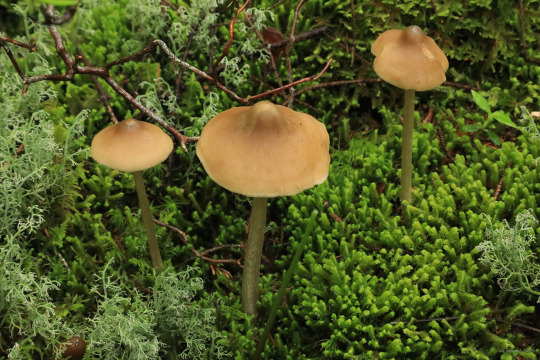

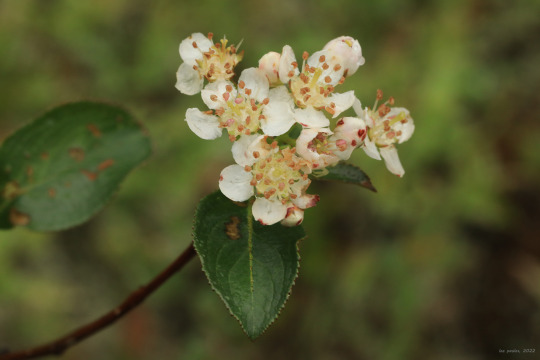
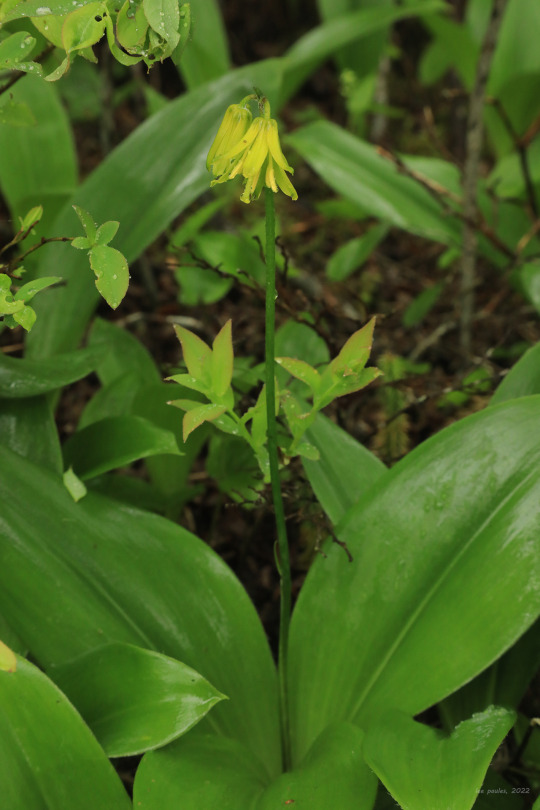
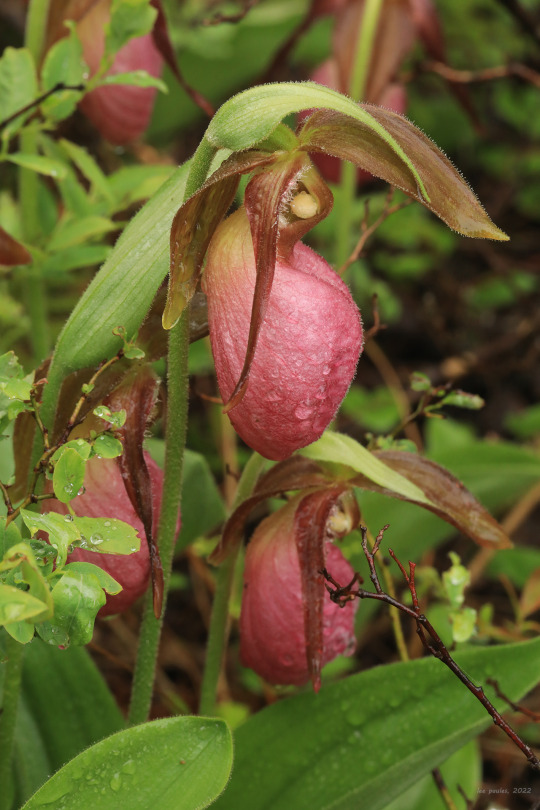

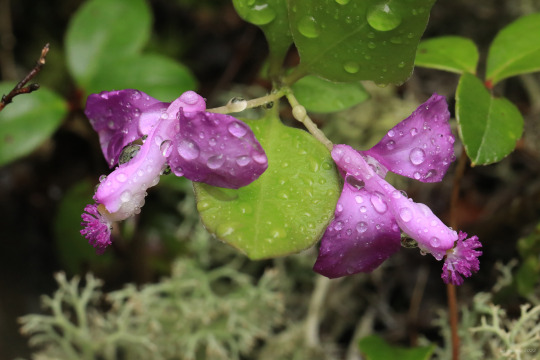
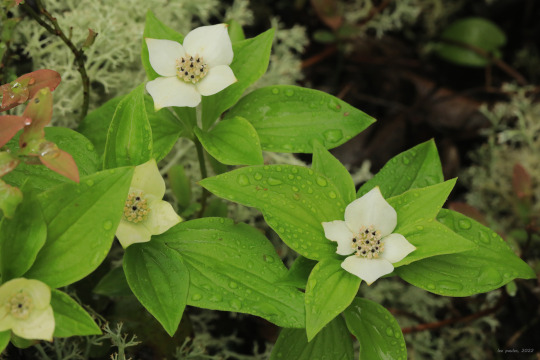

The red spruce forest straddling the spine of Spruce Mountain is truly an island in the sky - a bit of boreal forest stranded by the northward retreat of the glaciers during the last ice age. Red spruce forests once cloaked vast expanses of the higher elevations of the Central Appalachians but were largely logged out of existence by the early 20th Century. Today, the remnant forests are slowly making a comeback, although they will never be restored to their full historic range. We are fortunate to have them at all. A stroll through one of these high elevation forests is a surreal experience and reveals a surprising diversity of plants and animals, many uniquely adapted to live in the cool, acidic environment.
From top: Spring-fruiting Entoloma mushrooms, most likely Entoloma vernum, saprophytes that decompose organic matter for food; minniebush (Rhododendron pilosum), a blueberry-like shrub of the Central Appalachians that’s genetically closer to a rhododendron; black chokeberry (Aronia melanocarpa), a small, suckering shrub with blackish-purple berries and crimson-red leaves in the fall; yellow clintonia (Clintonia borealis), or bluebead lily, whose iridescent blue berries have the sheen of fine porcelain; pink lady’s slipper orchid (Cypripedium acaule), which clumps gregariously in the heath thickets on top of the mountain; the drop-dead gorgeous fringed polygala (Polygala paucifolia), also known as gaywings and flowering wintergreen, which for all the world looks like a dainty orchid but is actually a milkwort (Polygalaceae); and that lovely dwarf dogwood, bunchberry (Cornus canadensis), a perennial groundcover more at home in Maine and Nova Scotia than West Virginia.
#appalachia#vandalia#west virginia#spruce knob#spruce mountain#allegheny mountains#monongahela national forest#picea rubens#red spruce#fungi#mushrooms#entoloma vernum#rhododendron pilosum#minniebush#aronia melanocarpa#black chokeberry#clintonia borealis#yellow clintonia#bluebead lily#cypripedium acaule#pink lady's slipper#polygala paucifolia#fringed polygala#gaywings#flowering wintergreen#cornus canadensis#bunchberry#flora#wildflowers#spring
233 notes
·
View notes
Photo


A variety of Polygala, colloquially known as milkwort. The name ‘milkwort’ was given to it because it was believed to increase milk yield in cattle. The third petal is called a keel petal and is distinct in having a frilled end on it. At a glance the flower resembles those from the Fabaceae family, but while they share an order, Polygalaceae is a distinct family within the order.
#polygala#milkwort#flower#bloom#fringe#surreal#unusual#luminous#glowing#fluorescence#uvivf#fantastic#colors#vivid#magical#macro#nature#garden#botany#taxonomy#photo#photograph#photography
4K notes
·
View notes
Photo



I like digging holes and hiding things inside them
When I'll grow old, I hope I won't forget to find them
'Cause I've got memories and travel like gypsies in the night
I build a home and wait for someone to tear it down...
I've got no roots, but my home was never on the ground
I've got no roots, but my home was never on the ground...” --- “No Roots” (Alice Merton).
The Internet informs us that December 23rd is National Roots Day and, while the intention may be to celebrate our heritage, families, family history, and ancestry, we’re rooted to these fabulous illustrations from A Manual of Vegetable Materia Medica (1886).
Images from top:
Illustration of Aconite leaves and root, American may apple, star-anise root and calumba root.
Illustration of Pareira root.
Medicinal roots from the family Polygalaceae.
#botany#roots#botanical illustration#roots day#scientific illustration#plants#medicinal plants#othmer library#othmeralia
12 notes
·
View notes
Text

Poligala maggiore (Polygala major Jacq., Polygalaceae)
27 notes
·
View notes
Text
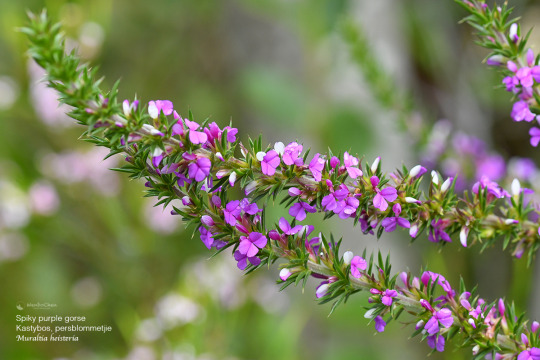



Spiky purple gorse
Kastybos, persblommetjie
Muraltia heisteria
This South African shrub has naturalised in Australia, especially in Sydney. Originally from the Cape region.
4 notes
·
View notes
Photo



Trailing Lance Leaved Rhatany , False Grass Pink, or False Sandbur Grass
Krameria lanceolata
I was going to make a post about this species much earlier, like in May when it blooms, but, I wanted to find information to make a decent post about a plant that's so cool.
First let's get the common names out of way. I feel like it’s easy to see why someone could look at this plant from a far and think that it looked similar to the Oklahoma Grass Pink Orchid, Calopogon oklahomensis, by shape and habitat location. The other name describing deception refers to its lance like leaves, sheathing morphological character, and swollen spike ball of a seed pod that looks similar to Sandburs. For it’s more common common name *coughs* it is more based upon it’s growth habit and morphology.
The real interesting part is floral morphology at its ecological behavior in a prairie and how it’s related to other dicots.
Krameria species in all respects are hemiparasitic organisms, meaning they get their nutrients from both parasitism and photosynthesis. Kameria parasitism is specialized form of hemiparasitism though. Where most hemiparasites and parasites focus on sugars this parasite has a widened root haustorium thats main focus is on water intake. Why would a parasite want water more than sugar in some cases? In the part of Oklahoma where I found this species It gets extremely hot and some plants have adopted ways to retain water or have enlarged tap routes or specialized organs to store water so they can photosynthesize when water is not present, other plants can shut off photosynthesis and boost anthocyanin production or close leaves. Krameria lanceolata has no such adaptation but can still healthily photosynthesize and be more productive than it’s neighbors because of its ability to use its haustorium to siphon water from other plants near by. These haustorium become practically available upon germination and the way they actively search for a host is still being researched.
For more check out: http://agris.fao.org/agris-search/search.do?recordID=US19780288905
The other thing that is so fascinating to me is their morphology as a product of coevolution with a specific prairie sand bee that collects oil, in the genus Centris. Krameria lanceolata focuses on different glandular utilitie sites instead of the common nectaries found within’ most dicots. These glandular sites are found on the central junction where the pseudo-lobelia and a type of stigmatic surface above the ovaries meet. The pseudo-column has a tuft of anthers at the top as well and as the female fly collects oil for its larva feed it will no doubt cause pollination in such a tight quarter.
also check out: https://www.jstor.org/stable/4393807?casa_token=4xNjSD2V6MkAAAAA:i9vP87ACUVqptU1XArBMOoR4atMJzzdwZ4_Dw8ULd1GsG_vYJS2CJ3lU7_MlMDFzPRVMlgTKHfYyGpn34ZpT_gXxBQRkV1luwK_bFnisKbB-1hOSlv24&seq=1#page_scan_tab_contents
and https://www.jstor.org/stable/2441040?seq=1#page_scan_tab_contents
As for the placement, Phylogenetics is still giving limited answers to where this plant should be place, analysis of pollen has also come out short. So honestly, I can’t wait till more is figured out about this family that used to be assumed as a tribe under Fabaceae or Polygalaceae
https://www.jstor.org/stable/2442860?seq=1#page_scan_tab_contents
Profile : http://explorer.natureserve.org/servlet/NatureServe?searchName=Krameria+lanceolata
Any way sorry for not posting this earlier, I just wanted to make sure I could explain this plant a little bit.
#Krameria lanceolata#hemiparasitic#prairie#oklahoma#wildflowers#plants#red#flower#plant#natives#usa#nature#wild flower#sandspur#rhatany#krameriaceae#botany#plantblr#plant life#plant nerd
22 notes
·
View notes
Text
Xanthophyllum fragrans (Polygalaceae)
This marvelous tree is an endemic of the Daintree region, although a good sized tree can easily be seen at the Cairns Botanical Gardens.
For a member of the Polygalaceae, this tree has pretty large flowers. And they are beautifully fragrant, as the name suggests. It is also commonly known as Fragrant Boxwood.
The leaves are simple, alternate, has no stipules, hairless on both sides, and have a…

View On WordPress
0 notes
Text
Viên chí, chữa ho đờm nhiều, mất ngủ, mụn nhọt và chữa đánh trống ngực
Viên chí, chữa ho đờm nhiều, mất ngủ, mụn nhọt và chữa đánh trống ngực
Cây Viễn chí là gì? Cây Viễn chí (Radix Polygalae) còn được gọi là Khổ viễn chí, tỉnh tâm trượng, viễn chí nhục, yêu nhiễu, khổ yêu, chích viễn chí, chí thông, nga quản chí thông,… . Tên khoa học là Polygala tenuifolia Willd, thuộc Họ Viễn chí – Polygalaceae. Viễn chí thuốc loài cậy […]
View On WordPress
0 notes
Photo


Fringed polygala or gaywings (Polygala paucifolia) is a perennial plant of the family Polygalaceae. Leaves are clustered at the top, appearing to be whorled, but they are not.
7 notes
·
View notes